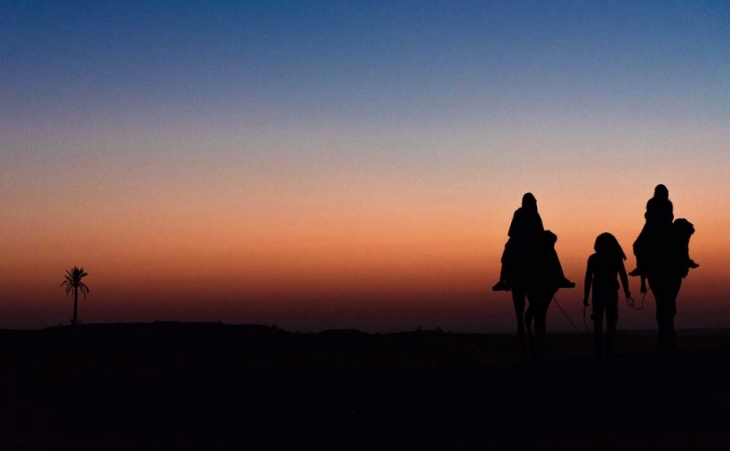
“A night in Tunisia” is a mythical song of the 40’s jazz. It pictures the poetry of nights in the desert, but also the dream of freedom and identity of African-Americans.
“The moon is the same moon above you / Aglow with its cool evening light / But shining at night, in Tunisia / Never does it shine so bright”…
“A night in Tunisia” is one of the most famous jazz standards, composed in 1942 by Dizzy Gillespie.
At the beginning, there was no mention at all of Tunisia in this song. It was named “Interlude », and its lyrics were completely different.
A few years later, Charlie Parker and Miles Davis’ version made the tune famous under its definitive name: “A night in Tunisia”.
In 1961, the great Ella Fitzgerald performed the song with new lyrics evoking a night in the Tunisian desert:
“The moon is the same moon above you
Aglow with its cool evening light
But shining at night, in Tunisia
Never does it shine so bright
“The stars are aglow in the heavens
But only the wise understand
That shining at night in Tunisia
They guide you through the desert sand
“Words fail, to tell a tale
Too exotic to be told
Each night's a deeper night
In a world, ages old
“The cares of the day seem to vanish
The ending of day brings release
Each wonderful night in Tunisia
Where the nights are filled with peace
“Each wonderful night in Tunisia”
“A Night In Tunisia” - Hotel Dar El Marsa, December 2018Singer: Aïcha Ben Amara. Guitar: Kaïs Sellami. Bass: Adel Azzouz. Drums: Heythem Ben Attia.
During World War II, the American army fought the German army in North Africa, particularly on Tunisia’s soil.
Several thousands of American soldiers died there, their remains now resting in the American cemetery of Carthage near Tunis.
The Second World War represented a crucial moment in the African-Americans empowering movement. Black people fought alongside White people, and were welcomed as heroes by liberated populations.
But in the United States, they were still subject to segregation and did not receive the same honors at the end of the war. Thus, the years that followed were years of uprisings which lead to the Civil Rights Movement.
The bebop style, introduced during this period by Dizzy Gillespie, Charlie Parker and others, pictured that rebellious spirit perfectly. This innovative style turned its back on big bands’ too conventional and consensual jazz.
It developed complex harmonies on a rhythm way faster, more nervous and syncopated, taking inspiration from African rhythms.
“A night in Tunisia” belongs to that movement: its rhythm is Afro-Cuban, its harmonies and its melody have something unsettling and exotic which can evoke Orient… or Tunisia.
The same Tunisia which represented, during the war, the arrival on the African ground, continent of origin of Black Americans.
Thus, this Tunisia where “the moon is the same moon above you […] Never does it shine so bright”, where stars “guide you through the desert sand” and where “the nights are filled with peace” was a beautiful symbol of return to the roots, peace and hope for African-Americans.
Star Wars in Tunisia: to the birthplace of the Skywalkers